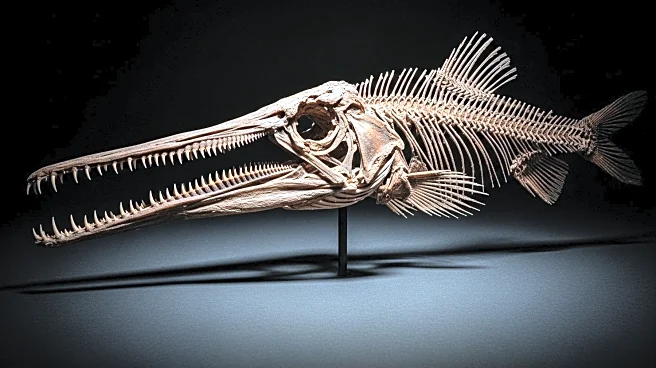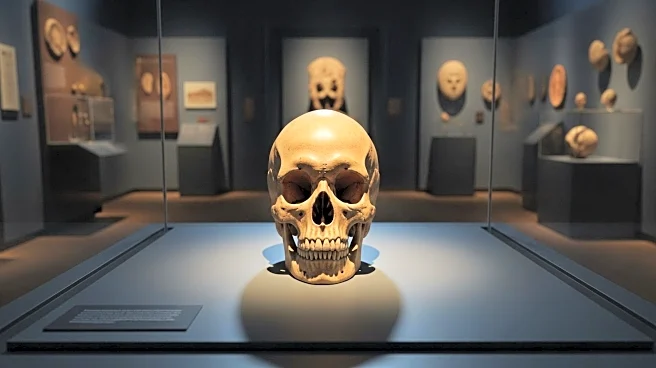What is the story about?
What's Happening?
A team of international researchers has uncovered a 310-million-year-old fossil of a ray-finned fish, Platysomus parvulus, which possessed a unique feeding mechanism involving a 'tongue bite.' This discovery marks the earliest known example of such a dental arrangement, previously thought to have evolved 150 million years later. The fish used a special set of teeth located on the floor and roof of its mouth to crush and chew tough food, such as shells and insects. The study, published in Biology Letters, utilized high-resolution CT scanning to reconstruct the internal anatomy of the fossil, found in Carboniferous rock formations in Staffordshire, UK. The research was supported by the Royal Society, the National Science Foundation, and the Natural Environment Research Council.
Why It's Important?
The discovery of Platysomus parvulus provides significant insights into the evolutionary history of fish, particularly following the End-Devonian Mass Extinction. This extinction event led to rapid innovation among ray-finned fishes, including the development of new feeding strategies. The tongue bite mechanism, which has evolved multiple times in different fish groups, allows fish to consume a wider variety of food and adapt to diverse environments. Understanding these evolutionary steps helps scientists comprehend ancient ecosystems and the origins of modern fish lineages.
What's Next?
The study suggests that further research into the evolutionary adaptations of early ray-finned fishes could reveal more about the diversification of feeding strategies post-extinction events. This could lead to a deeper understanding of how ancient fish adapted to changing environments and how these adaptations influenced the development of current fish species.
Beyond the Headlines
The discovery highlights the importance of fossil studies in understanding evolutionary biology and the complex interactions within ancient ecosystems. It also underscores the role of technological advancements, such as high-resolution CT scanning, in uncovering detailed anatomical features of fossils that were previously inaccessible.
AI Generated Content
Do you find this article useful?














